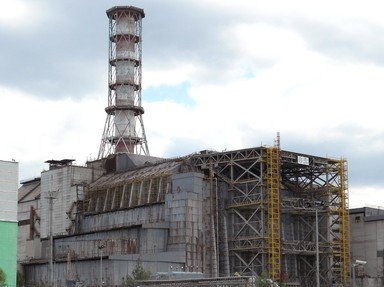Quiz Answer Key and Fun Facts
1. Probably the best known disaster involving nuclear power is the one that happened in the Chernobyl plant. The town of Pripyat in the Soviet Union was rendered uninhabitable, but, in which modern country did all this take place?
2. The most notorious nuclear accident to occur on US soil was probably the one at Three Mile Island, in Pennsylvania. Following a failure in the condensate polishers and the main pumps, the core was shut down. However, it was still hot. What was the next cause of this accident following this energy surge?
3. One of the worst radiation accidents occurred on August 10th, 1985, aboard K-431, a Soviet naval vessel being refuelled. What type of ship was K-431?
4. On September 30th, 1999, three Japanese workers were exposed to a high level of radiation due to critical mass that they had produced in a bucket. What were the workers actually trying to do?
5. A bad nuclear accident occurred when a tank at Tomsk-7 in Russia exploded leading to the area being contaminated. What was being done to the tank at that time?
6. The worst nuclear accident occurring on UK soil in the 20th century was the Windscale fire of 1957. What material used in the reactor, usually annealed to let out the excess energy, contributed to the accident?
7. The Davis-Besse Nuclear Power Station in Oak Harbor, Ohio, has had several accidents in its history. In 2002 it was discovered that the reactor pressure vessel head's integrity had been jeopardized. What caused this?
8. Not all accidents are caused by critical mass. This Soviet accident was caused by poor storage of nuclear waste. Which 1957 site caused an explosion rendered over 800 square kilometers uninhabitable?
9. Not all nuclear accidents take place on the ground. In 1966, an American B-52 bomber crashed and bombs from its payload released deadly plutonium upon breaking open from impact with the ground. Over which country did this occur?
10. Even Canada (eh?) has had its nuclear accidents. In 1952 at Chalk River, Ontario, a loss-of-coolant accident led to partial damage of the core. Which future US President was part of the cleanup crew?
Source: Author
LeoDaVinci
This quiz was reviewed by FunTrivia editor
bloomsby before going online.
Any errors found in FunTrivia content are routinely corrected through our feedback system.

